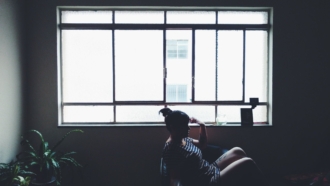There’s a whiteboard on the wall of Dr. David Muller’s office.
“Science is the foundation of an excellent medical education,” it reads, “but a well-rounded humanist is best suited to make the most of that education.”
Dean for medical education at Icahn School of Medicine at Mount Sinai in New York — one of the top medical schools in the United States — Dr. Muller oversees the FlexMed program, which ensures students with liberal arts degrees like English or medieval studies are admitted to medical school.
How, you ask, can a degree in literature help a student become a great doctor?
Dr. Nathan Kase, who founded the first-of-its-kind program in 1987, “had a firm belief that you couldn’t be a good doctor and a well-rounded doctor — relate to patients and communicate with them — unless you really had a good grounding in the liberal arts.”
The FlexMed program is leading a culture shift in medicine that prioritizes a well-rounded mind over perfect test scores. It also emphasizes the importance of creativity in the fields that, to some, have nothing to do with creativity at all.
Dispelling the creativity myth
There’s a common stigma that limits creativity to those with “creative” jobs.
While culture perceives specialists like graphic designers and violinists as real “creatives,” we tend to view doctors and engineers as anything but.
The myth that creativity is only for career artists limits our potential as people, because it can prevent us from tapping into the creativity we all inherently possess.
Nietzsche said it well:
“Life is a work of art.”
If that’s the case, then it logically follows that we are all artists.
Regardless of your vocation or even your interests, you instinctively practice creativity every day. Moment by moment, you’re creating your life, making little decisions that culminate in the person you will become.
Your lunch choice, a challenging conversation with a colleague, finding a more efficient route home — all of these minute, daily decisions require creativity.
While specialists like painters and musicians express it in a more obvious, outward way, you don’t have to be a specialist to be creative. You can express your creativity and even grow it, regardless of your job title.
“It’s not just your ability to draw a picture or design a product,” writes neuroscientist Roger Beaty. “We all need to think creatively in our daily lives, whether it’s figuring out how to make dinner using leftovers or fashioning a Halloween costume out of clothes in your closet.”
Thinking like a creative
Perhaps you don’t feel creative if you’re pent-up in an office staring at spreadsheets all day.
The good news is, there’s scientific evidence that creativity is less about vocation and more about mindset.
In a 2010 study at Lehigh University, researchers surveyed more than 13,000 art school graduates about how their creative education affected their current careers. They found that there’s very little correlation between a person’s job and their perception of creativity at work.
Not surprisingly, 87 percent of grads working in an explicitly creative job were happy with their ability to be creative at work — but so were 60 percent of the respondents working in fields that had nothing to do with the arts.
These findings are a concrete reminder of what creativity truly is: a mindset, not a personality trait or a skill that some possess and others lack.
Creativity is less about who you are and what you do, and more about how you choose to see the world around you.
Cultivating creativity
Thankfully, even if you don’t work in a studio, you have the same internal resources as someone who makes a living as an artist. But it’s up to us to establish the conditions for creative thought.
“Creativity is learnable providence,” writes social scientist Joseph Grenny. “It feels like an inexplicable miracle when it arrives, and we may never be able to isolate all the variables that generate it. But, in my experience, we can reliably create the conditions to invite it.”
So how can we build an environment conducive to creativity?
In my experience, creativity begins with a subtle mindset shift.
To be more imaginative, we need to see, and leverage, opportunities for creative thinking, even in the most mundane parts of our work.
While I collaborate with plenty of talented designers, my CEO role at Jotform isn’t outwardly “creative.” Instead, my days are full of strategy meetings and troubleshooting.
Once I began to see problem-solving as an opportunity to “make art” with my life, things changed.
My definition of creativity broadened to include everyday tasks, interactions, and responsibilities.
Routine meetings became fruitful brainstorming sessions. My morning “brain dump” became an exercise in communicating more thoughtfully and effectively. Business lunches with colleagues transformed into opportunities to learn from and be inspired by another person’s perspective.
While nothing about my job description changed, over time, my attitude and approach shifted. And it made all the difference in my ability to innovate.
How to be more creative
Explore the problems at hand
Creativity typically means solving problems. Whether you’re designing a logo for a client or writing code for an app, creating is about finding a solution.
So before we can infuse our day with innovation, it’s important to understand the problems we face. Only when we see the gaps are we motivated to fill them creatively. That’s the power of insight.
Founder and designer Cassius Kiani writes:
“Before creativity starts, you need to ask yourself what you’re aiming to change, add value to or solve. Only after you’ve identified the problem are you able to begin questioning it and developing insight.”
Alternate between interest and indifference
Investing in what fascinates us is a great way to spark creativity in everyday life. Reading a book or watching a documentary on a topic we want to explore can motivate us to stay inspired in the areas we care about most.
But there’s also a real benefit to consuming information that doesn’t appeal to you since “outlier” topics can stretch your mind and encourage new ways of thinking.
Grenny has a practice of reading one article that doesn’t interest him every time he flips through a business journal: “Sometimes, we call things “boring” simply because they lie outside the box we are currently in.”
Have challenging conversations
Some of my most inspiring learning experiences have come from talking to people who see the world differently than I do. That’s because standing in someone else’s shoes promotes psychological flexibility.
“Another great creative stimulus is to regularly engage in conversations with people from whom you might normally recoil,” writes Grenny. “Three of the more unexpectedly fruitful conversations of my life were with a racist cabby in London, a drug dealer seatmate on a plane, and an extremist political advocate in Puerto Rico. While I didn’t change teams as a result of these conversations, I gained valuable perspectives from lives I will never live.”
Take a hike
Creativity isn’t just about consuming inspiring information. If the goal is to act on what we’re learning in a meaningful way, we have to pause to let our minds make connections.
Kiani calls it “incubation”:
“Often referred to as selective forgetting, incubation is the little rift in time where your brain creates high–quality connections (and ideas) using the information it’s been fed during saturation. For incubation to take place, you need to step away from the problem — literally.
Take a walk, switch tasks or grab a bite to eat. Incubation cannot happen if you’re rushed off your feet and working your mind overtime.”
Follow rabbit trails
In the grind of our daily work days, it’s easy to be hyper-focused on tasks and projects. But “get things done” mode leaves little room for us to question the status quo.
To grow creatively, we have to leave a margin for curiosity and questions. Let yourself lose focus on the task at hand every so often, especially if it means you might discover an idea that could inspire you in a future project.
Act like a creative
Like learning a new language or building muscles at the gym, creativity is a discipline just as much as a skill.
No matter where we are in the process, and no matter what our job titles and descriptions say, we can teach ourselves to think and behave creatively at work and in life.
Fortunately, opportunities to flex our creative muscles are all around us. It’s just a matter of choosing to see them.















Send Comment: